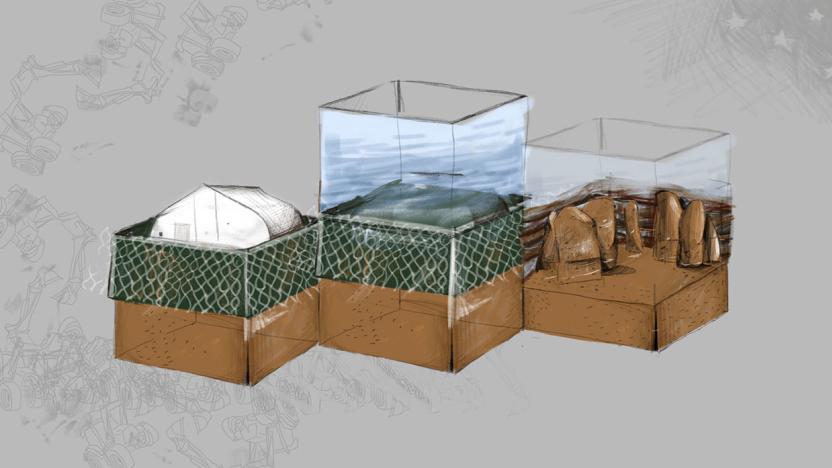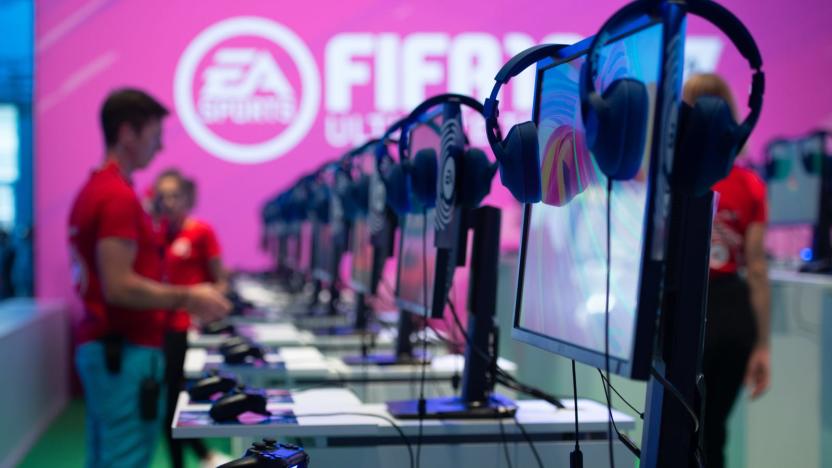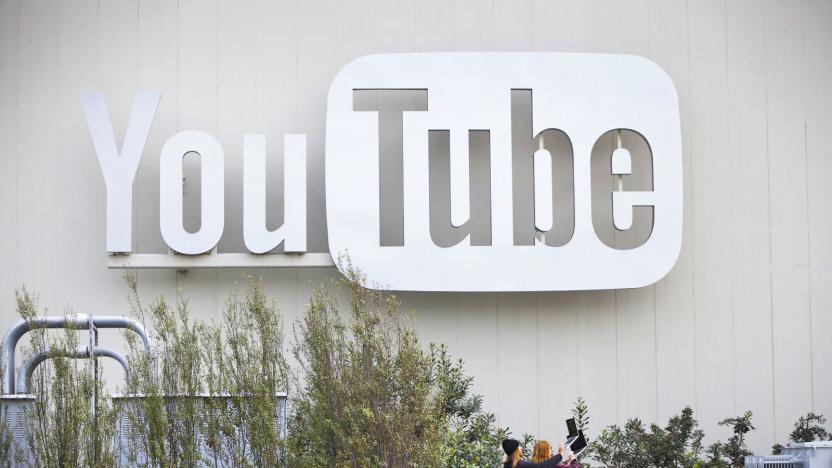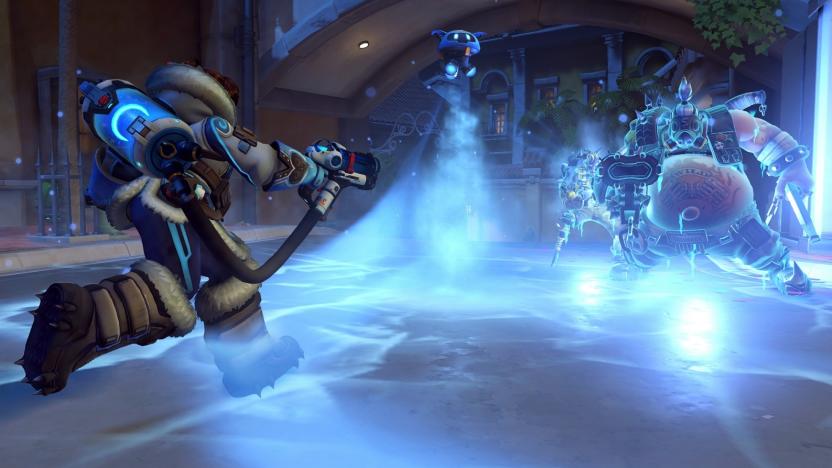toxic
Latest

Toxic coast: Cleaning up a century of industrial waste in New Jersey
The Quanta Resources Superfund Site is one of 1,335 contaminated sites across America that the EPA deems most urgently in need of a clean-up. If Superfund status is any indicator, New Jersey has the dirtiest dirt in the country, and the Gold Coast has some of the dirtiest dirt in New Jersey.

How Riot Games' new team plans to curb trolling before it begins
Riot Games doesn't use the word "toxic." "Toxicity means different things to different people," Riot's head of Player Dynamics Weszt Hart said. "What's trash talk to one person is totally inappropriate to someone else, which makes it really hard to proactively design a solution. 'Toxic' is so subjective, we failed to see how it was blinding us to the possibilities."

EA meets with gamers to help curb toxic behavior online
EA knows online harassment is a problem with its games like anyone else's, and it's taking some (small) steps toward creating a less toxic space. The publisher used the recent Gamescom expo to hold the first meeting of the Healthy Communities Player Council, a group of gamers teaming with EA to address vile behavior in online gaming. While EA focused on sharing updates on its own efforts (including improved harassment reporting tools and research into disruptive behavior), the Council offered feedback on what EA could do better -- and it apparently had a few ideas.

Two-thirds of online gamers in the US experience 'severe' harassment
It's no secret that online gaming can harbor toxic and abusive behavior. But a new survey by the Anti-Defamation League (ADL) says as many as many as two-thirds of US online gamers have experienced "severe" harassment. More than half of the respondents said they've been targeted based on their race, religion, ability, gender, sexual orientation or ethnicity. Nearly 30 percent claim they've been doxxed in an online game, and nearly a quarter of respondents say they've been exposed to white supremacist ideology.

YouTube execs reportedly shrugged off warnings about toxic videos
YouTube leaders ignored proposals to alter recommendations to stamp out toxic videos and to tackle conspiracy theories, several former and current employees told Bloomberg. Executives were more concerned with keeping viewers engaged, according to the report.

Blizzard is patrolling YouTube for toxic Overwatch players
Toxic players are a big problem for the Overwatch team. As game director Jeff Kaplan explained in a developer update last September, they're actually delaying maps and feature updates by forcing the developers to create measures to stem the tide of crappy player behavior. Those tactics seem to be working. In a new video, Kaplan reported that competitive play has less abuse and players are reporting more often. But the Overwatch team has gone further with at least one new proactive strategy: Find toxic behavior uploaded to 'social media sites like YouTube' and punish the accounts responsible.

Google’s comment-ranking system will be a hit with the alt-right
A recent, sprawling Wired feature outlined the results of its analysis on toxicity in online commenters across the United States. Unsurprisingly, it was like catnip for everyone who's ever heard the phrase "don't read the comments." According to "The Great Tech Panic: Trolls Across America," Vermont has the most toxic online commenters, whereas Sharpsburg, Georgia, "is the least-toxic city in the US." There's just one problem.

Sea lions are getting sick from toxic algae blooms
Sea lions off of the coast of California are getting very sick and it's because of increased blooms of toxic algae. The algae release a chemical called domoic acid and when sea lions eat fish that feed on the algae, it causes seizures, gastrointestinal issues and can lead to brain damage. For many sea lions, the poisoning is a death sentence. "It's hard. It's really hard to watch these animals suffer, especially if there's not something we can do to stop these blooms from happening," Cara Field a veterinarian with the Marine Mammal Center told CBS News.

Disqus wants to help rid the web of toxic commenters
In recent years, commenting services have come and go, but one has maintained a consistent presence on some of the world's biggest websites: Disqus. It's spent the past ten years helping brands and news media develop their own communities, while simultaneously amassing hundreds of millions of users of its own. The service is big enough that its commenting tools have been deployed on websites that host unsavory content, which it has, in turn, become associated with. Disqus has said it has no tolerance for hate speech but continues to host discussions on websites that promote toxicity. Now, it says, it wants to do more about it.

League of Legends public chat rooms disabled by Riot
What's the fastest and easiest way to deal with the problems in League of Legends chat channels? Apparently, just shutting them down completely. Riot Games has removed several of the public chat rooms until the company finds a way to turn them into something "useful and accessible." The company is aware that there are great communities in the game, but it's too easy for toxic individuals to mask that. Not only were the public chat channels problematic, but even the private channels lacked effective moderation tools outside of an ignore button. The development team is starting over from a new foundation, hoping to make the chat rooms a place to hang out with friends and more easily organize matches instead of being... well, what they were before. Feedback is welcome, so chime in on the official forums if you know what you want to see when the chats finally return.

iPhone 5 chemical study shows a green Apple, leaves room for improvement
Eventually, that shiny new iPhone 5 will have to meet its untimely end, whether it's in a landfill or (preferably) a recycling company's machinery. When it does, you'll at least be glad to know that Apple has kept the toxin levels down. HealthyStuff and iFixit have dissected the extra skinny smartphone and put it in the same "low concern" category for potential harm that's normally occupied by phones wearing their green credentials on their sleeves. Lest anyone rush to tell Greenpeace about the feat, just remember that there's a difference between proficiency at excising dangerous chemicals and getting rid of them completely: HealthyStuff still found small traces of bromine, chlorine, lead and mercury in the iPhone 5's construction, which could pose risks if the handset is ever broken apart or melted for scrap. Some concern also exists that the x-ray fluorescence spectrometer doesn't reveal the full extent of any toxic materials. Whether or not these remain sore points for you, the new iPhone is at least easier on the eco-friendly conscience than most of its peers.

How to dye a MacBook
For Easter this year (which is on April 8), here's a wonderful idea for making your old white MacBook match up with your Easter eggs. "The Brain" at BrainDeadlockLabs decided to do a dye job on his MacBook to give it a bright orange finish that's more at home with Halloween than Easter, and provides full instructions on his amazing mod. The Brain's MacBook was dyed with Rit Fabric Dye, the same stuff hippies have trusted for more than a generation to produce clear, bright tie-dye clothing. He chose a bright orange finish for the outside of the computer, then used the keyboard and bezels from a "poor old liquid-spilled black MacBook" to make a hauntingly awesome orange and black MacBook. The process is a bit involved, since you have to remove all of the electronics from the MacBook before dipping it into the dye. And, as The Brain warns, "if you dye half your stove, your hands, and permanently ruin your computer, it rests on you." You're also warned that "Rit dye is toxic, and is meant for clothes/fabrics/things that don't normally touch your mouth," so if you have a tendency to lick your MacBook, this could prove to be fatal. It does look pretty cool, although commenters on the post believe that Krylon spray paint would work well and be a lot easier to apply.

Q.U.B.E. moves 12K copies in first four days, recouping full Indie Fund investment
Beyond being a game we're quite fond of, Q.U.B.E. is also profitable as of right now. Well, okay, a little bit before now, as the folks who funded the project -- the major league indies who comprise the "Indie Fund" -- have already recouped their expenses, according to a recent blog post at their official site. "We are happy to announce that Q.U.B.E., the first Indie Fund-ed game to market, took only four days on Steam to generate enough revenue for Toxic Games to repay the full investment amount of $90k," the post reads. The project was originally supposed to cost just $42K, but the eventual budget ballooned to $90K, paid out in several big chunks. Thankfully, that investment paid off with 12K sold copies since the game launched last week. The post also notes that Toxic Games is already discussing the possibility of moving Q.U.B.E. "beyond PC," though it's unclear whether that just means "to OS X" or to somewhere even more enticing (XBLA/PSN, perhaps?). We've asked Toxic Games for more info, naturally.

Researchers say nanorockets could deliver medicine quickly within the blood
Faster delivery is always better when it comes to pizza, Thai food and now... drugs? Doctors seem to think so as they're experimenting with a new method of delivering medicine to the bloodstream via tiny nanotubes powered by rocket fuel. By storing healing meds within the platinum-coated metal tubes, doctors have been able to propel the tiny vessels up to 200 times their own length per second -- faster than swimming bacteria. It works as such: by introducing a hydrogen peroxide/water solution, the platinum reacts, sending it zipping forward and catalyzing the peroxide into water and oxygen. The downside? Even though the fuel is only .25 percent peroxide, it's still slightly toxic -- so it looks like it's back to the drawing board until they can develop a safer alternative. Spiders, perhaps? Check out the video demonstration after the break.

Inhabitat's Week in Green: magnetic highways, MoMA tech exhibit and lasers in the sky
Each week our friends at Inhabitat recap the week's most interesting green developments and clean tech news for us -- it's the Week in Green. Renewable energy supercharged our transit system this week as Inhabitat showcased Vycon's plans to tap speeding subway trains for immense amounts of kinetic energy, and we took a look at an innovative magnetic highway system that harvests energy from passing cars. Biofuels also got a boost from several unlikely sources as researchers discovered that bacteria in panda poop is incredibly efficient at breaking down plant matter, and scientists developed a way to recycle newspaper into biofuel. We also showcased a real-time energy monitoring device for kids, we learned that some radioactive areas around Fukushima are more dangerous than Chernobyl, and we took a look inside a subterranean atomic shelter that has been transformed into a cavernous underground office. How do machines communicate with people? If you're pondering that idea, you'll be interested in this exclusive video interview with Museum of Modern Art curator Paola Antonelli on MoMA's new 'Talk to Me' technology exhibit which recently opened in New York City. We were also amazed by several artistic innovations this week as Wacom unveiled a pen that instantly digitizes anything you can draw and Sarah Garzoni created a beautiful series of printed paper butterflies. In other news, we shined the spotlight on several brilliant advances in lighting technology as scientists successfully created rain by shooting laser beams into the sky and a designer unveiled a solar OLED tile system that can transform skyscrapers into zero-energy displays. We also brought you several bright ideas in wearable tech as Halston unveiled a glow-in-the-dark sequin gown, a ghostly troop of illuminated radiation suits wandered through the German countryside, and a Cornell student developed a type of clothing that traps toxic gases. Meanwhile the Hudson River lit up with a luminous field of 200 LEDs and Laser Power Systems unveiled plans for a nuclear powered car. Speaking of green transportation, we also spotted a high-tech E-Max motorcycle that converts pressure into power, and we watched Toyota's all-electric P001 racer become the first EV to break the Nurburgring's 8-minute speed record.

Samsung study finds no link between cancer and work conditions, might not be released in full
Samsung has finally wrapped up that investigation into alleged cancer risks at its chip facilities, but it might not share the details with the rest of the world. In the study, which the company commissioned last year, researchers from US-based Environ International Corp. found that cancers affecting six semiconductor employees were unrelated to any chemicals they may have been exposed to on the job. Of those six workers, four have already died and five of the families are currently pressing charges. Last month, a South Korea court determined that two of the cases could be linked to toxic chemical exposure -- a ruling that Environ's report clearly contradicts. Samsung, however, is reluctant to disclose the results in full, for fear that doing so may reveal some proprietary information. Environ's Paul Harper declined to say how much Samsung paid for the investigation, due to client confidentiality, while confirming that the research was carried out in consultation with a panel of independent experts. Semiconductor exec Kwon Oh-hyun, meanwhile, denied that the company commissioned the study in order to use it as evidence in the ongoing court case, in which Samsung isn't even listed as a defendant.

Samsung launches investigation of chip lines following cancer allegations
Here's an odd one. Samsung, which has been known to be on better-than-average terms with the South Korean government in the past, is launching independent investigations in response to reports that "toxic materials used in chip making may have caused cancer in some of its employees." In one of the more bizarre stories of the year, Samsung has recently come under fire from social and civic groups to actually look into the incidents, which were reported over a decade ago but were found to not be Sammy's fault by the aforesaid government. This week, the company admitted that 22 of its employees (who worked at a chip facility outside of Seoul) had been diagnosed with leukemia or lymphoma, and 10 of them had perished. Cho Soo-in, president of Samsung's memory division, told the media that the firm is "deeply sorry about the loss of loved ones," and that it "actively cooperated on epidemiologic investigations, which concluded there were no leaks of radiation." We've got a feeling we know exactly what will be concluded here, but we'll certainly keep an ear to the ground for anything atypical.

Website rates best and worst cellphones by radiation output levels -- how does yours stack up?
You're surely aware that your cellphone bleeds radiation into your face the whole time you're on the phone with your mom, best friend or lover, right? Yes, it's a fact we try not to think about most of the time, but now there's a tool out there on the internets for the more reality-facing folks among us. The Environmental Working Group's launched a website dedicated to rating cellphones on their radiation output alone. Ranking highly (meaning they put out the lowest levels of radiation) are the Motorola RAZR V8, and AT&T's Samsung Impression. In fact, it seems that Samsung is cranking out the healthiest phones these days! Phones with poor showings includes T-Mobile's myTouch 3G and the Blackberry Curve 8830. So hit the read link and tell us, how does your phone rate?[Via bookofjoe]

E-cigarettes contain carcinogens and toxins after all, FDA warns
In case you ever of the mindset that e-cigarettes were somehow toxin free, at least compared to the more traditional smokes, along comes the FDA to shatter your illusions. A report this week from the government agency calls out the product with a safety warning, charging that the cartridges they examined contained "carcinogens and toxic chemicals such as diethylene glycol, an ingredient used in antifreeze." The FDA says it can't confirm the extent of the health issues, as it's only done limited testing and it hasn't been formally submitted for review, but it doesn't look quite as risk-free as previously touted. Don't say the WHO never warned ya. So remind us again, what's the point in smoking one of these over an old school cigarette?[Via Switched; thanks, flatlander85]

Mac Pros accused of emitting toxic gas, placing blame on someone else
Just when Apple has started to make some friends at Greenpeace, it looks like another one of its fine products might be a wee bit toxic. According to the French newspaper Liberation, that mysterious stench emanating from your Mac Pro contains benzene -- which can irritate the eyes, skin and respiratory tract. Instead of being a mere inconvenience, that smell could be a cloud of poison gas that threatens to dizzy up, nauseate and migraine-ify you and everyone you care for. Apple has yet to issue a statement on any of this, but until it's all straightened out, those of you with the stinky Macs might want to seriously consider wearing a hazmat suit when checking your email.Update: Apple tells Macworld that "We have not found anything that supports this claim, but continue to investigate it for the customer." Funny -- that's exactly what we used to say during long car rides. [Via the Guardian]














